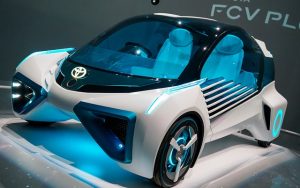 Toyota has announced plans to improve its lineup over the next five years. Through 2021, the Japanese automaker will focus on several key areas, enabling it to exceed consumers’ expectations and stay ahead of market trends. Impressive in scope, the bold plan entails developing new engines, transmissions, and hybrid systems. Ultimately, Toyota hopes to create a better driving experience by making vehicles that outperform their rivals, use less fuel, and have lower emissions.
Toyota has announced plans to improve its lineup over the next five years. Through 2021, the Japanese automaker will focus on several key areas, enabling it to exceed consumers’ expectations and stay ahead of market trends. Impressive in scope, the bold plan entails developing new engines, transmissions, and hybrid systems. Ultimately, Toyota hopes to create a better driving experience by making vehicles that outperform their rivals, use less fuel, and have lower emissions.
Building New Engines
By the conclusion of 2021, Toyota plans to have new engines, transmissions, and drivetrains on 60 percent of its vehicles in major markets. The new powertrains will be designed to provide better performance while also using less fuel and emitting less carbon dioxide into the air. Within the next five years, Toyota will unveil 17 versions of nine newly designed engines. As for transmissions, expect to see 10 iterations of four new gearboxes, and 10 variations on six hybrid systems.
Focusing on Hybrid and All-Electric Vehicles
As consumers and regulators demand greener vehicles, Toyota is responding with a dual focus. Between now and 2021, Toyota will assign engineers to work on improving hybrid technology and battery-electric vehicles. According to industry reports, Toyota plans to increase the number of workers dedicated to developing hybrid systems by 30 percent to meet its goals under the new five-year plan. Given the new initiative, it appears Toyota will spend fewer resources on vehicles that get power from a hydrogen fuel cell.
Improving Consistency Across the Lineup
As Toyota rolls out its new engines and transmissions, it plans to scale back its engine offerings. In fact, the company will cut the number of engines in its global lineup by 40 percent.
Why bring more consistency to its powertrains? One of the internal drivers behind this effort is Toyota’s commitment to its new modular vehicle platform called Toyota New Global Architecture (TNGA). The platform will give birth to a new group of vehicles that cost less to make but offer superior performance. To date, the only TNGA-developed vehicle available for purchase is the fourth-generation Prius.
Previewing the New Engines
At a press conference in late 2016, Toyota showcased a 2.5-liter four-cylinder engine that runs on gasoline, a new hybrid setup for cars with rear-wheel drive, an eight-speed automatic gearbox for front-wheel drive vehicles, and a 10-speed automatic transmission for vehicles with rear-wheel drive. All the new technologies are supposed to make their official debut on line-produced vehicles in 2017.
How Customers Benefit
The forthcoming changes have meaning for customers. For starters, most buyers want more bang for their buck. There’s tremendous appeal in getting a better-performing car without a dramatically higher price tag. Overall, consumers are always pushing for enhanced performance from new vehicles. Toyota’s new engines and transmissions for 2017 promise a 20 percent improvement in fuel efficiency and a 10 percent improvement in acceleration.
In comments to reporters, the president of Toyota’s Power Train Company said the upgraded engines and transmissions will serve as points of differentiation. He hopes this new effort to produce better-performing vehicles at a lower price will set Toyota apart from its rivals.
Image via Pixabay





